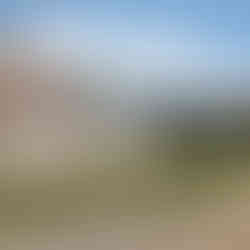Agritourism Sia - Champion Cheese from the Istrian Sheep
- Vedran Obućina
- Jul 22, 2018
- 3 min read
“Write everything I say, don’t be like other journalists!”, warns us Mr Franko while we sip a glass of rose rakija. “But they are here for gastronomy, they are not political journalists”, shouts Mrs Stana from the background, who made the rakija herself as every other kind on the shelf of the restaurant within the Agritourism Sia near Vodnjan. Mr Franko Cetina, the winner of numerous awards for the sheep cheese and president of the Istrian association of sheep and goat herders, is often among the politicians from the Ministry of Agriculture, trying to make their senses about cattle herding in general. Soon, we saw and tasted the fruits of his hard work.

The family Cetina has 200 Istrian Pramenka Sheep. Istrian sheep is also distinct in the genetic sense as a unique breed that is distinct at first glance not only from other original sheep breeds but also from those of European and world. It was born in the wider area of Istria, where it is almost exclusively cultivated today. It is believed that at the end of the 18th century a complex process of Istrian sheep has begun, with the use of the overseas breeds of Gentile di Puglia and Bergamo sheep for breeding indigenous sheep. The native Istrian sheep belongs to a group of sheep of combined production qualities (milk-meat-wool). The Istrian sheep is primarily intended for the production of milk, which is being processed in family farms into a traditional semi-solid sheep cheese. According to the size of the population, it is among the potentially endangered Croatian original breeds.

We didn’t see Cetina’s sheep, as they were somewhere in the meadows, enjoying the typical Istrian pasturelands in vicinity of the village of Guran. But we did try the cheese, cherished all over Istria and beyond. Semi-hard, it has a typical sheep-cheese flavour, characteristically mild aroma and scent, and is just perfect with any appetizer. Cheese matures in the family dairy, just opposite of the sheep stable on the estate. The air is full of milky scent, while the cheese rests in cool dark place on wooden shelves.
For 20 years, the family runs the cheese manufactory Guran and holds golden championship, as well as many other awards. However, Mr Franko says the number of sheep he has is very small in comparison to 1876, when Istria had 176,000 sheep. Today there are some 6000, of which only 1000 sheep have the brand of Istrian Pramenka. The Cetina family tries to protect the cheese by its origin, and we wish him every luck, although we have no doubts this will be success.

In arrival to the Agritourism Sia, we were in contact with Mrs Klaudia, who wasn’t there at the time. She, together with her sister Sandra, run the accommodation at this agritourism, which consists of beautiful and old stone houses with every trace of the Istrian rural architecture. We wonder, why is the name of the agritourism Sia… is it see-ya? Or maybe Hungarian word for hello – Szia? No, the reason is much better – these are initials of three grandchildren: Sandi, Ivana, and Alesia.
All of them help to run the agritourism, within which is a restaurant famous for its excellent lamb. We didn’t have a lamb, but only a plate of Istrian dry meats and beautiful cheese, some homemade white wine and company of friendly dog. The owners had to go to Vodnjan, but didn’t hesitate a moment to leave us alone at their terrace. “Just leave the plates – but empty ones”, they say with a bright smile. So we did, with a determination to come back and explore more of this hospitable estate.

Agritourism Sia
Guran Stancija 21, 52215 Vodnjan
+385 52 511 033
https://www.facebook.com/Agroturizam-Sia-1424974920870019/?ref=page_internal
Gallery


























Comments